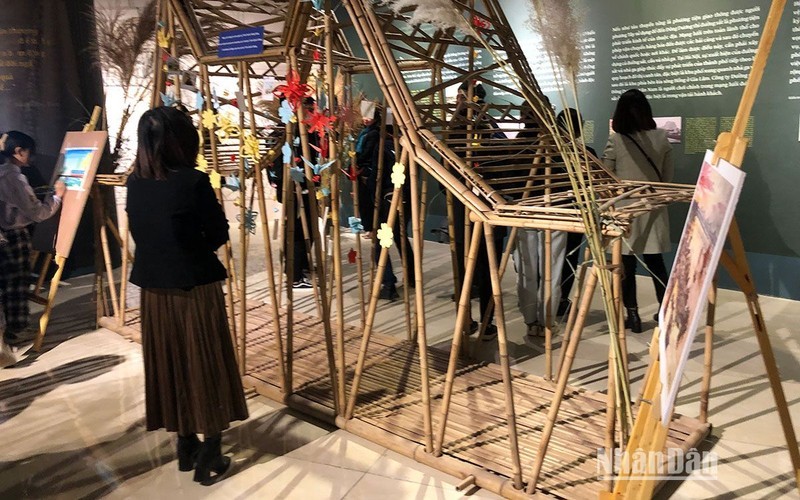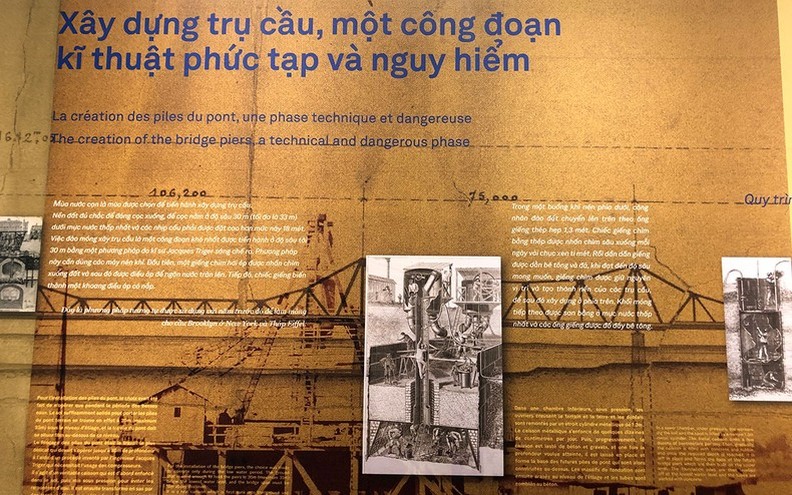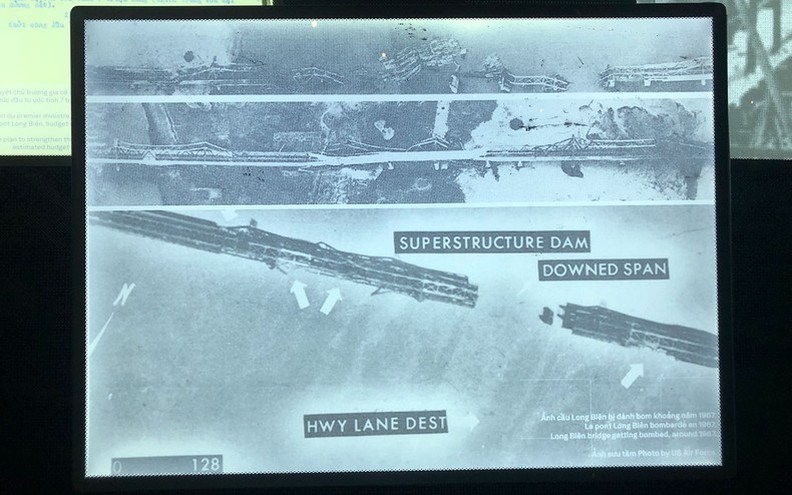A collection of old documents related to Hanoi’s iconic Long Bien Bridge has been unveiled to the public for the first time at an exhibition entitled “Long Bien Bridge – The Eyewitness of History”.

Model of Long Bien Bridge made of bamboo.
The exhibition was co-organised by the National Archives Centre 1 and the École Française d'Extrême-Orient (EFEO, or the French School of Asian Studies) to celebrate the 120th anniversary of the iconic bridge.
On September 13, 1889, Governor-General Doumer held a ground-breaking ceremony for a bridge crossing Hong (Red) River. The bridge was designed in the style that the contractor Daydé & Pillé Company applied for the first time to Tolbiac Bridge in Paris. It has a length of 1,862m, consisting of 19 steel beams and a stone path. There is a single railroad track for trains in the middle and both sides have pathways for motorised vehicles and pedestrians.
The bridge was officially inaugurated on February 28, 1902, after nearly three years and nine months of construction, and was named after Paul Doumer, the French Governor-General of Indochina. It was renamed Long Bien after Vietnam gained independence in 1945.
The construction of the first steel bridge in Vietnam took the efforts of thousands of Vietnamese workers under the guidance of French experts. In addition to tonnes of limestone transported from Thua Thien-Hue, 30,000 cubic metres of stone and ironwood blocks were brought from Thanh Hoa and tonnes of cement from Hai Phong.
Vietnamese workers also created the tens of thousands of rivets needed for the bridge and dove deep into the river to construct its abutment, 30m below the water surface.
The documents and images show details how the bridge was built, expanded and renovated. The life of people living in the Red River mudflats under the bridge were also depicted in several images.
Among the documents and images are on display, some are on loan from the French Overseas National Archives (ANOM).
The objects include a construction bidding registration approved by the French Governor-General of Indochina, Paul Doumer. The drawings of the bridge’s façade and longitudinal section by the French contractor Daydé & Pillé Company are also on display.
Visitors can enjoy the exhibition which has been set up following three major contents: The Bridge was Built from a Crazy Idea, By Long Bien Bridge, and Memories of Long Bien Bridge.
Alongside the old documents and images, the exhibition was also enriched by photographs that were taken by Vietnamese and foreign photographers.
To create a lively and diversified displaying space, the organisers also set up a small model of the Long Bien Bridge as the background for anyone interested in photography. In addition, junior visitors can present their art ability by drawing paintings at a creative corner.
In 1972, Hanoi suffered from US bombing for 12 days and nights, Long Bien Bridge was also rammed and badly damaged. During the war, large motor vehicles moving across the bridge also caused the bridge to deteriorate and had to be repaired. Rare photos of the bridge breaking after being bombed are displayed at the exhibition, along with decisions as well as pictures of bridge repair works.
Along with stories surrounding the bridge, the community's memories of Long Bien Bridge were also shared and introduced at the exhibition along with photos by 5 photographers, paintings by artist Tran Anh Tuan, and a bamboo model of Long Bien Bridge which was donated to National Archives Centre 1.
Hanoi has been celebrating the 50th anniversary of the “Hanoi - Dien Bien Phu in the Air”, and Long Bien Bridge is also seen as a symbol of the war. The stories about Long Bien Bridge told in the exhibition not only help young people today understand more about the bridge that has been associated with the city for more than a century, but also learn about a part of Hanoi's history.

The first steps in forming the bridge.

Description of the bridge’s construction process.

The bridge was destroyed by bombs during the war.

An image of the broken bridge from above, extracted by the National Archives Centre I from US military photos.

The photos were donated by photographers for the exhibition.